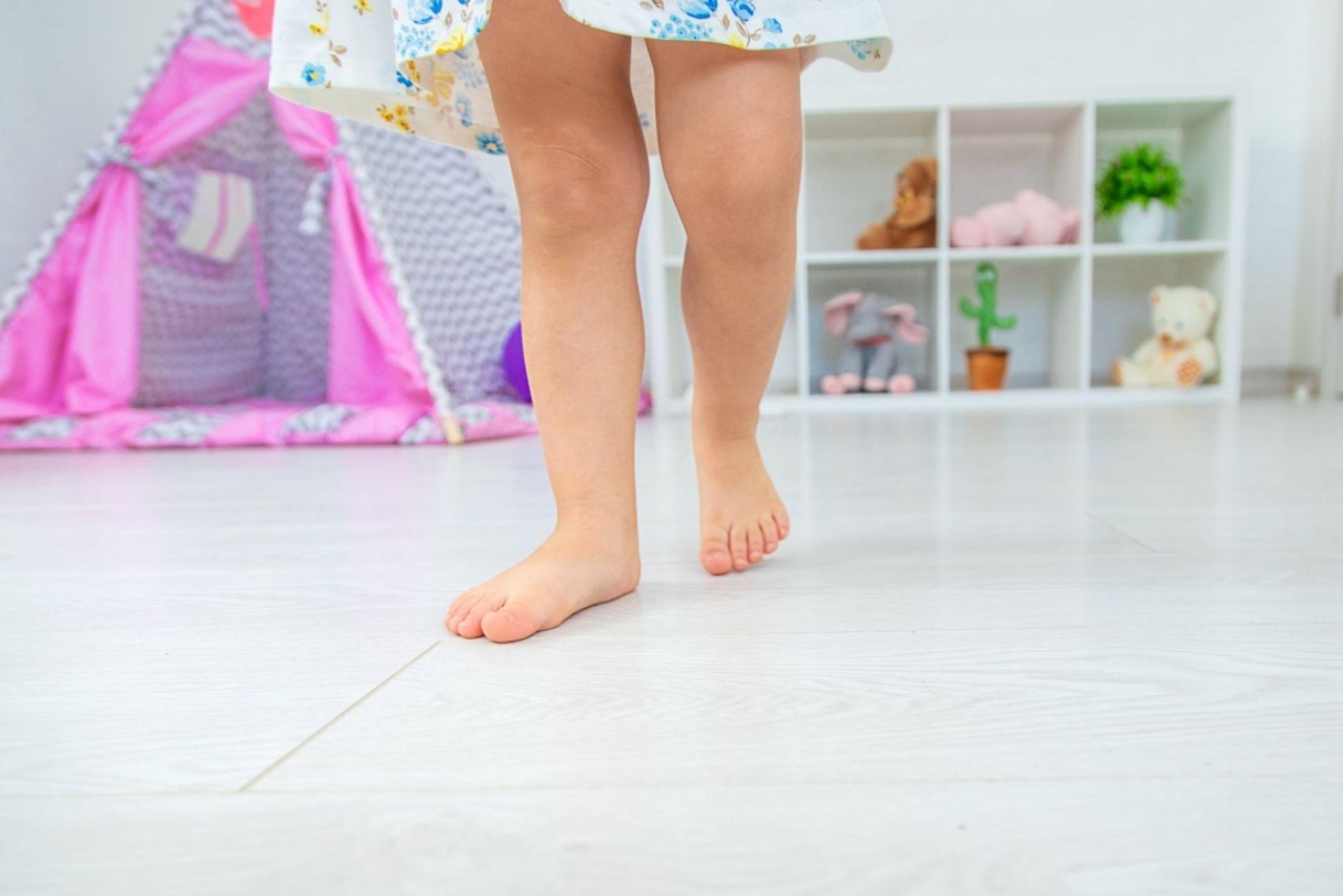
Flat feet is a common childhood condition where the arches of the foot flatten against the floor when standing. Many adults have flat feet as well, and in most cases it is nothing to worry about. However, it is useful to know what it looks like and what symptoms to watch out for so you can help your child if needed.
Flat feet often run in families, so if you or your partner have flat feet, there’s a chance your child might too. However, lots of people have flat feet even if their parents don’t, so it’s not a perfect indicator.
To find out if you or your child has flat feet, the easiest thing to do is to stand as you normally would and take a look at the inside edge of your feet. If there is an arch in the centre where your foot doesn’t touch the floor, this means you have arched feet. If there is no arch and your feet lie completely flat, then you have flat feet. It’s easiest to tell when you’re barefoot.
This method works well for adults and children. If it’s tricky to persuade your child to stand still barefoot long enough for you to check, try just keeping an eye on them while they’re walking around or playing. Flat feet are usually fairly easy to spot when you’re looking for them.
In the majority of cases, particularly in children, flat feet don’t cause any symptoms other than the physical flatness of the foot. If this is the case for your child, then there’s no need to worry and no reason to seek treatment, regardless of their age. Lots of people live with flat feet without it causing any problems at all.
Adults who have flat feet will generally have them for life, as they’re no longer in a period of fast growth. For children, though, it’s much more likely that they will grow out of their flat feet by around the age of six. As they get older, the tendons that support the foot can grow stronger and develop an arch where they didn’t have one before - this is perfectly normal and nothing to be concerned about.
However, a small number of people, children and adults, do experience pain relating to their flat feet. Usually this is centred around the ankle or the arch of the foot and is mild, but it may get worse during physical activity like sports. If this is the case, you can speak to your GP about options to treat this.
Any number of things can cause flat feet, but they’re often a result of genetics - or they’re just how your child’s feet naturally are. In any case, there’s nothing wrong with having flat feet and most people live their lives perfectly normally despite having them. Flat feet are rarely symptomatic, meaning they don’t usually cause any problems at all. Often, they are almost entirely unnoticeable, allowing your child to run and play, just like their peers.
We all want what’s best for our children, but that doesn’t mean we should wrap them in cotton wool. If your child doesn’t have any pain, the best thing you can do is to let them carry on as normal. It is possible that they might start to feel pain later, but there’s no need to worry until they do.
So when should you speak to a doctor about your child’s flat feet? Well, if they start to feel pain in their feet or they aren’t walking the way they usually do, this is an indication that their flat feet are beginning to affect them more than usual. Additionally, if they suffer foot or ankle injuries more often than usual while playing or exercising, or if their feet feel numb, weak or stiff, it’s a good idea to ask your doctor about it. It might not be caused by their flat feet, but your doctor will be able to help you identify the problem and potentially find a solution. Finally, you should speak to your GP if your child suddenly develops flat feet after previously having arched feet, or if only one of their feet is flat. None of these things are necessarily a sign of anything bad, but it’s good to get it checked out anyway.
Whether your child is flat-footed or not, it’s a good idea to keep an eye on them and take note of any changes in the way they walk or stand, as this could indicate problems with their feet or shoes. As always, remember to look after your child’s feet and keep measuring them regularly so you can make sure their shoes keep up with them as they grow.
Author: Click Consult, published 03-03-2023.